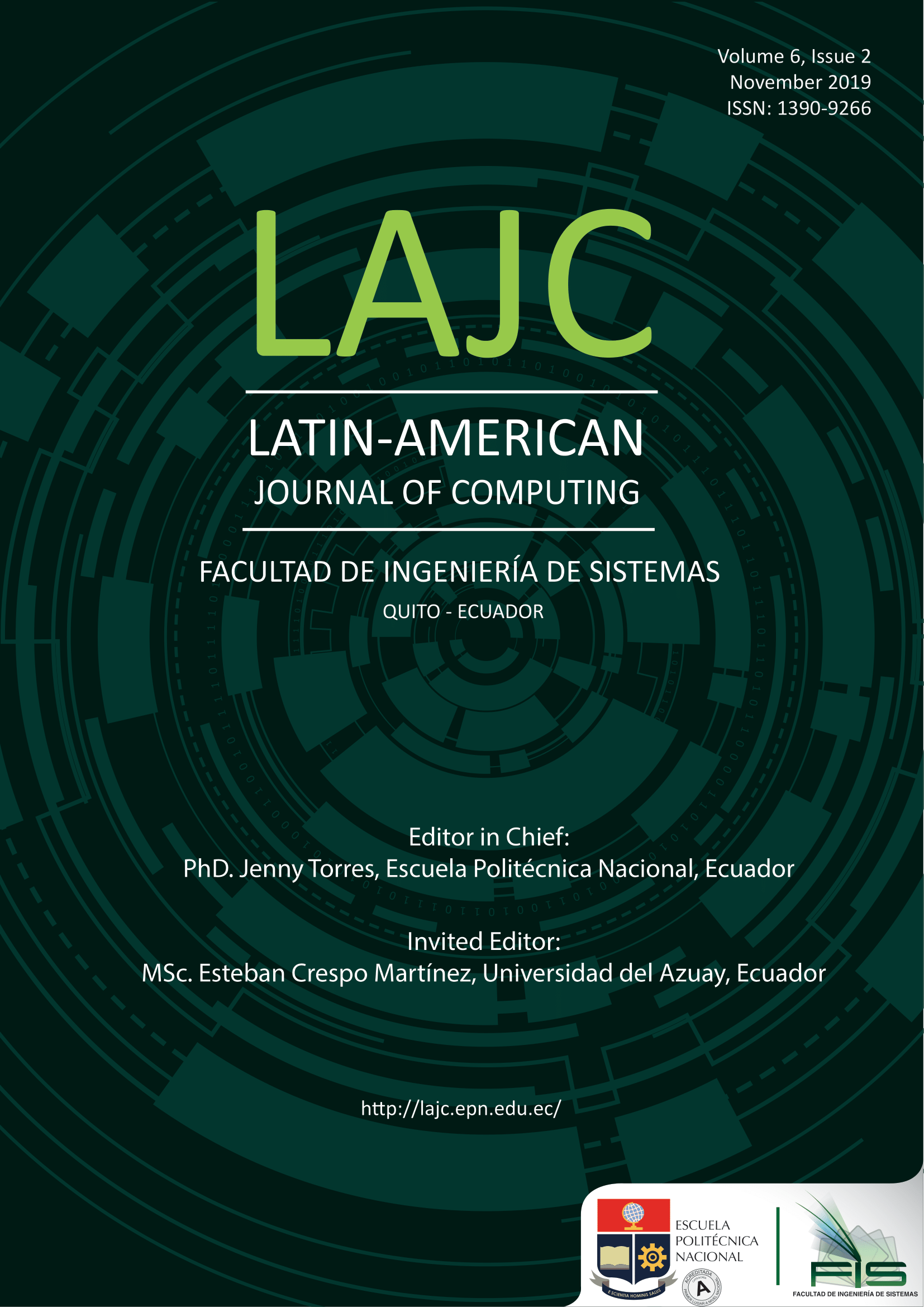Design of a Prototype of Accident Prevention System for Industrial Vehicles Using Radio Frequency Identification Technology
Palabras clave:
Propagation, radio wave, RFID, UNB, FHSSResumen
Given the inherent need to have technological tools to reduce the number of incidents caused by the operation of heavy machinery, this document briefly describes the design of a prototype Accident Prevention System for industrial vehicles using Radio Frequency Identification Technology (RFID). ) that warns about the proximity of people to the area of operation of industrial equipment, the deployment of Open Source technology provides the necessary resources for a Raspberry Pi 3 B + control device to execute information processing through a control interface that will activate an alarm and through a management module the RFID components (TAGS and Readers) will be managed and the reports of the readings will be obtained. Finally, considering factors such as frequency, the operating environment, the type of modulation, the antenna height, the radiation pattern of the antenna, the antenna gain and the receiver gain influence the propagation of the waves radio will perform a predictive investigation in different scenarios by means of an estimation of the coverage based on the model of propagation of loss in free space to verify the reliability of the prototype that operates with Ultra Narrow Band technology and employs techniques of Spread Spectrum by Jump Frequency.
Descargas
Referencias
H. Córdova y P. Chávez, «Estudio, Modelamiento y Simulación de Sistemas de Espectro Ensanchado.,» Revista Tecnológica ESPOL, vol. 18, nº 1, 2005.
K. Technologies, «Electronic Components Datasheet Search,» [En línea]. Available: https://bit.ly/3JFA731
S. Peredo, Software para analisis del presupuesto de enlace para comunicaciones vía satélite, Tesis de Grado Licenciatura en Ingeniería en Electrónica y Comunicaciones, Escuela de Ingeniería, Universidad de las Américas, Puebla, México, 2004.
M.-T. Zhou, J. Jurianto, J. Shankar y M. Fujise, «Characterization of Radio Path Loss in Seaport Environment for WiMAX Applications,» Singapore, 2006.
S. Savazzi, B. Ramos, J. Winter, S. Kianoush, V. Rampa, E. Del Rosario, T. Chavez y O. Cevallos, «Towards a factory-of-things: Channel modeling and deployment assessment in PetroEcuador Esmeraldas oil refinery,» IEEE Latin-American Conference on Communications (LATINCOM), 2016.
Descargas
Publicado
Número
Sección
Licencia
Aviso de derechos de autor/a
Los autores/as que publiquen en esta revista aceptan las siguientes condiciones:
- Los autores conservan los derechos de autor y ceden a la revista el derecho de la primera publicación, con el trabajo registrado con la Creative Commons Attribution-Non-Commercial-Share-Alike 4.0 International, que permite a terceros utilizar lo publicado siempre que mencionen la autoría del trabajo y a la primera publicación en esta revista.
- Los autores pueden realizar otros acuerdos contractuales independientes y adicionales para la distribución no exclusiva de la versión del artículo publicado en esta revista (p. ej., incluirlo en un repositorio institucional o publicarlo en un libro) siempre que indiquen claramente que el trabajo se publicó por primera vez en esta revista.
- Se permite y recomienda a los autores a compartir su trabajo en línea (por ejemplo: en repositorios institucionales o páginas web personales) antes y durante el proceso de envío del manuscrito, ya que puede conducir a intercambios productivos, a una mayor y más rápida citación del trabajo publicado.
Descargo de Responsabilidad
LAJC en ningún caso será responsable de cualquier reclamo directo, indirecto, incidental, punitivo o consecuente de infracción de derechos de autor relacionado con artículos que han sido presentados para evaluación o publicados en cualquier número de esta revista. Más Información en nuestro Aviso de Descargo de Responsabilidad.










